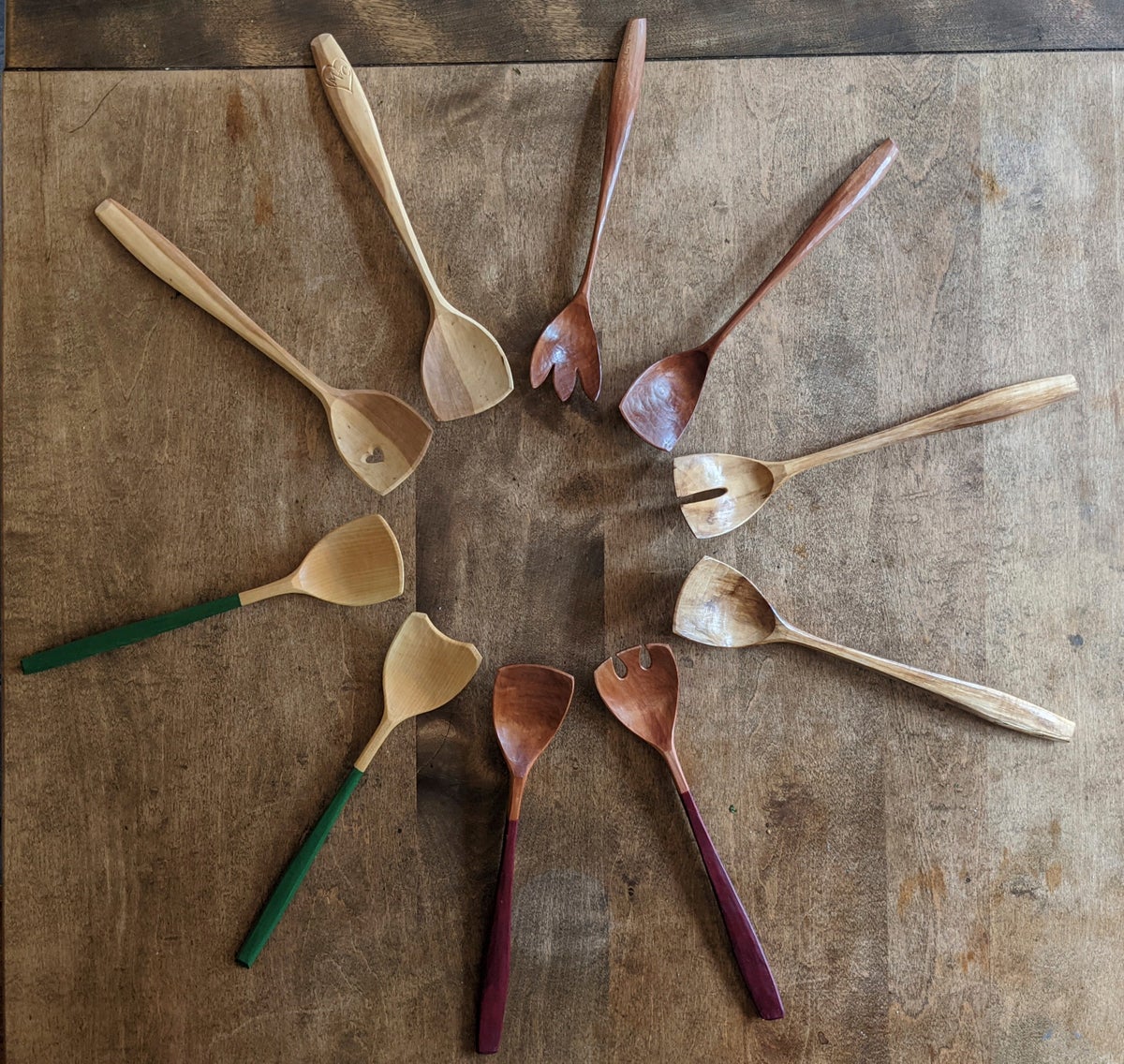
Many people discovered their inner cook during the pandemic. I unexpectedly discovered my inner woodcarver, making a butter knife.
It wasn’t a sharp object, rather something to smooth a dollop of butter across an entire piece of toast in one swoop.
I’m likely not the first person you’d expect to find at a Sunday afternoon woodcarving lesson. As a working mom of two young kids, I have all the trappings of middle-age life, and what little free time I’ve had of late was devoted to wine and mindless TV.
But I signed up with another mom for the green woodcarving class at a fundraiser for my children's elementary school, and learned about a whole new way to relieve stress. It is a hobby I would love to take up regularly, though I’m not sure I actually will.
“You get to tap into creativity and tap into working with your hands and tap into that meditative aspect,” as one carver, Kaylyn Messer, put it. “Also, the community is a neat connection with people, where you have a common topic to talk about with lots of people.”
One hot afternoon, I arrived at the Newton, Massachusetts, home of our instructor, Matt Day, a 43-year-old insurance actuary. Day has been woodworking since boyhood, helping with his father’s projects. He’s been green woodcarving for about seven years and sells his wares — spoons, bowls, and more — online.
“You can’t take power tools on vacation,” Day said, explaining one of the attractions of green woodcarving, which uses just a simple knife called a sloyd (after the Swedish slojd, which means handicraft).
“It’s sharper than anything you have in your kitchen,” Day said.
In class, Day required us to sheath the knife any time we weren’t using it. There was no placing it down for a quick second. And, indeed, this knife was sharp. Whittling away, I ended up barely touching the tip to my thumb. The prick felt so intense I thought blood might rush. It didn’t.
Green woodcarving, also known as spoon carving, uses fresh timber. The wood is still moist from when the tree was alive. It will dry out in a matter of days or, if preserved correctly, a couple months. Working with dry or fresh wood is a personal preference, and each requires a different set of skills.
Where do you find this fresh wood without killing a tree? Day said woodcarvers will often trade. Perhaps a neighbor cut down a large tree or knows someone who did. But you can also order it online.
He used a power saw to cut rough outlines of the spreading knives that were our starter project. Cut with the grain, he said. And when we didn’t, it was obvious immediately: The bark would curl up roughly instead of falling to the ground.
Carving, I discovered, was therapeutic, and time elapsed without us thinking much about it. The knife glossed over the fresh wood, peeling it off.
Since this class, I’ve learned about the community of woodcarvers — people eager to talk shop and enjoy company, or make artisanal tools and sell them.
One is Chuck Trella, 60, of Cornwall-on-Hudson, New York. He started by carving hiking sticks and small figurines. Creating with his hands was a nice complement to his professional job in IT, he found.
Pre-pandemic, Trella and a few carving buddies started Rise Up & Carve, a group that meets on Zoom and carves for an hour or so.
“I started it because I wanted to develop a daily carving habit,” Trella said.
On Rise Up, people chat and carve, or they simply carve alongside others. After COVID-19, this woodcarving Zoom group started attracting people from all over the world.
“It’s basically a 24-7 operation now,” he said.
Many carvers will say woodworking leads to a state of flow. You can carve for hours and not think about too much else, Trella said.
There is also something special about making a physical object with your hands, especially if the artistic medium comes from nature.
“I was attracted to doing spoons because it is something you can crank out pretty fast,” Trella said. “Spoons are a simple geometric form, and they aren’t a huge time commitment.”
Still, don’t underestimate the skill required in spoon carving. It involves a hatchet and a few different knives.
“Making a really good spoon is very challenging,” said Peter Follansbee, a professional woodworker, furniture maker, teacher and author.
Follansbee, who made his first spoon in the 1980s, has taught old-timey woodworking at the Plimoth Patuxet Museums, a living museum in Plymouth, Massachusetts, honoring the indigenous people and early American colony there.
The craft goes back millennia.
Follansbee also helped start the nonprofit Plymouth CRAFT, which hosts classes in handicraft, including the Greenwood Fest that draws hundreds of woodcarvers from all over the world.
“We frequently get people with no experience and two days later will have their first spoon,” Follansbee said. "I always tell them to burn the first two they make and then go make 10 to 15 more.”
A growing number of women have taken up woodcarving.
“It’s an approachable hobby,” said Messer, 37, who lives outside Seattle. “The expectation of perfection isn’t there, and everything is useful.”
When Messer’s job in IT went remote because of the pandemic, she found woodcarving online was a way to connect with other people.
“Now that I’m working at home, it has been good because I don’t see people as much," she said. “It has been good for my mental health and creative expression over the last couple years.”
Messer is also a passionate cook, and wooden spoons come in handy. She has gifted her spoons to friends who enjoy cooking.







